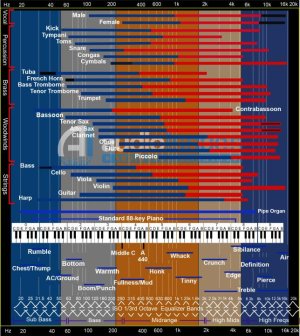Chistopher
malapterurus electricus tonewood instigator
I modified my Rat 2, using a mere 2 components. Heres a basic analysis for anyone who cares to know.
The way a Rat works is that it a signal gets boosted to the high heavens through an opamp, then further distorted through a hard clipping arrangement of clipping diodes, then it runs through a tone control no more advanced then the one on a guitar.
The way the opamp works is that it has two high pass filters in the feedback loop. I won't bore you with the specifics, but the first filter makes it so any frequency above 60 Hz gets boosted a decent amount. The second filter makes it so any frequencies above 1.5kHz get boosted quite a bit more. The signal then travels through the hard clipping circuit and causes the signal to clip and compress at higher gain settings. This is why Rats get thin at low gain, the bass treble frequencies hit the maximum headroom and boosting the gain further allows the quieter bass frequencies to get there too.
My mod aimed to change two things: a more usable gain control and more bass at low gain settings. I didn't want to majorly overhaul the sound as the famous Ruetz mod does either.
So I looked at GGBB of diystompboxes "bass boost" mod and did some tweaking to the component values. I took the 47R and 2.2uF leg (R8 and C7) of the feedback loop high pass filter and doubled the resistor value to 100R and halved the cap to 1uF. This lowered the overall gain of the circuit and gave a near 6 dB boost to frequencies below 1.5kHz. At high gain settings this isn't too big a difference, at low gain settings it's a major difference. The reduction in gain has made it so that diming the gain is the equivalent to about 2 o clock on the stock circuit. This makes it so that the famous sweet spot at 9 o clock is much more spread at at the expense of losing the upper range of travel on the gain knob that doesn't do much anyway. Seriously, on a stock unit SSL-1s can reach saturation at about 1 o clock.
This mod doesn't dramatically alter the Rat. All of the high gain sounds you can get on a stock pedal are still there. It does however make it a lot easier to dial in distortion and (now thicker) overdrive settings, where the stock unit wants to jump right from thin fizzy OD to full on fuzz
I'm more than happy with the mod. I like the Rat as is, but anything that makes me spend less time finding the perfect setting on the knobs is a good thing.
The way a Rat works is that it a signal gets boosted to the high heavens through an opamp, then further distorted through a hard clipping arrangement of clipping diodes, then it runs through a tone control no more advanced then the one on a guitar.
The way the opamp works is that it has two high pass filters in the feedback loop. I won't bore you with the specifics, but the first filter makes it so any frequency above 60 Hz gets boosted a decent amount. The second filter makes it so any frequencies above 1.5kHz get boosted quite a bit more. The signal then travels through the hard clipping circuit and causes the signal to clip and compress at higher gain settings. This is why Rats get thin at low gain, the bass treble frequencies hit the maximum headroom and boosting the gain further allows the quieter bass frequencies to get there too.
My mod aimed to change two things: a more usable gain control and more bass at low gain settings. I didn't want to majorly overhaul the sound as the famous Ruetz mod does either.
So I looked at GGBB of diystompboxes "bass boost" mod and did some tweaking to the component values. I took the 47R and 2.2uF leg (R8 and C7) of the feedback loop high pass filter and doubled the resistor value to 100R and halved the cap to 1uF. This lowered the overall gain of the circuit and gave a near 6 dB boost to frequencies below 1.5kHz. At high gain settings this isn't too big a difference, at low gain settings it's a major difference. The reduction in gain has made it so that diming the gain is the equivalent to about 2 o clock on the stock circuit. This makes it so that the famous sweet spot at 9 o clock is much more spread at at the expense of losing the upper range of travel on the gain knob that doesn't do much anyway. Seriously, on a stock unit SSL-1s can reach saturation at about 1 o clock.
This mod doesn't dramatically alter the Rat. All of the high gain sounds you can get on a stock pedal are still there. It does however make it a lot easier to dial in distortion and (now thicker) overdrive settings, where the stock unit wants to jump right from thin fizzy OD to full on fuzz
I'm more than happy with the mod. I like the Rat as is, but anything that makes me spend less time finding the perfect setting on the knobs is a good thing.

